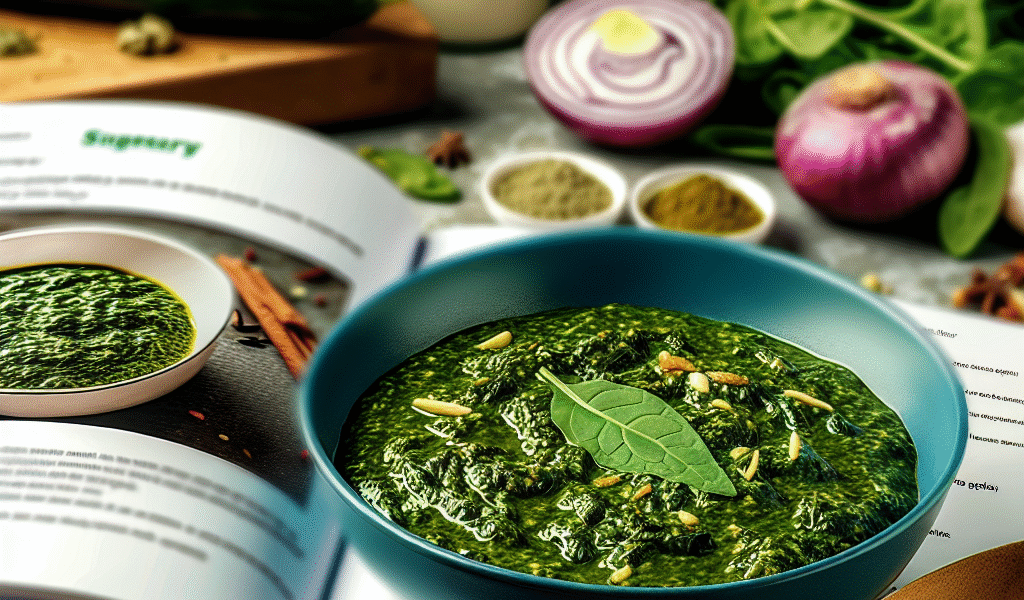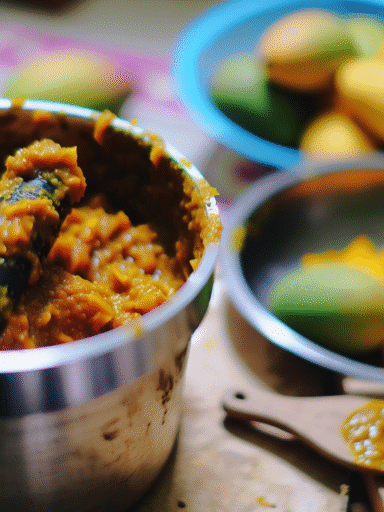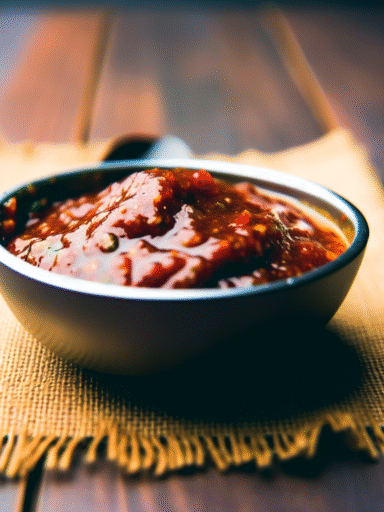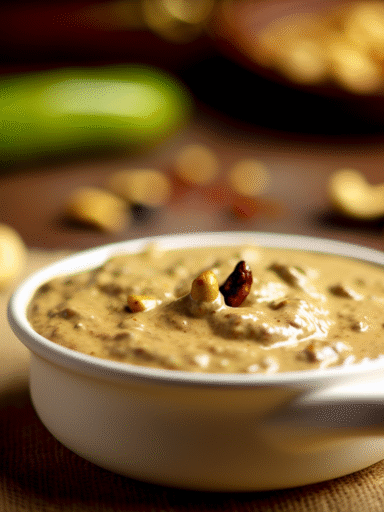Saag Sauce
Tags / Categories: Indian cuisine, spinach-based, earthy flavor, vegetarian, main ingredients: spinach & mustard greens, regional: North India, usage: dipping sauce, curry base, side accompaniment
Quick Info Box
- Prep time: 15 minutes
- Cook time: 30 minutes
- Total time: 45 minutes
- Difficulty level: Easy to Medium
- Yield: Serves 4–6
Ingredients List
- 500g fresh spinach leaves (or 300g frozen spinach, thawed)
- 200g mustard greens (optional but traditional)
- 2 tablespoons ghee or vegetable oil
- 1 large onion, finely chopped
- 4 garlic cloves, minced
- 1-inch piece of ginger, grated
- 2 green chilies, chopped (adjust to taste)
- 2 medium tomatoes, finely chopped
- 1 teaspoon cumin seeds
- 1 teaspoon garam masala
- 1 teaspoon ground coriander
- ½ teaspoon turmeric powder
- ½ teaspoon red chili powder (optional)
- Salt to taste
- Fresh lemon juice, to taste
- Water as needed
Making Magic with Saag Sauce: A Step-by-Step Guide
Let’s dive right in — making saag sauce isn’t just about following a recipe, it’s about coaxing deliciousness out of humble greens. The key here is layering flavors with aromatic spices and cooking the spinach and mustard greens just right so they soften and blend smoothly, yet keep some texture. Don’t worry about getting it perfectly pureed — a little chunkiness adds character and honest charm to this sauce.
- Begin by washing the spinach and mustard greens thoroughly, removing any tough stems. Roughly chop them and blanch in boiling water for 3–4 minutes until wilted. Drain, then squeeze out as much water as you can. This step keeps your sauce vibrant and prevents it from becoming watery.
- Set your pan over medium heat and add the ghee or oil. Once shimmering, toss in the cumin seeds and let them toast until fragrant, about 30 seconds. Your kitchen will smell amazing right about now.
- Add the chopped onions and cook until golden brown, stirring occasionally. This caramelization brings a lovely sweetness that balances the greens’ earthiness.
- Stir in the minced garlic, grated ginger, and green chilies. Cook for another 2 minutes until their fresh aroma awakens your pan.
- Add the chopped tomatoes, salt, turmeric, coriander, red chili powder, and garam masala. Cook down for about 5–7 minutes until the tomatoes break down and the oil starts to separate—a sign your spices are well roasted.
- Now, toss in those blanched greens. Mix well and add a splash of water if it looks too thick. Reduce the heat, cover, and simmer gently for 10 minutes, stirring occasionally.
- If you prefer a smoother sauce, use an immersion blender to pulse it a couple of times, but don’t overdo it. The texture should invite you to dive right in.
- Finish with a squeeze of fresh lemon juice — this brightens the sauce and elevates all those deep flavors.
Serving Suggestions: Where Saag Sauce Shines
Saag sauce is incredibly versatile. Traditionally, it’s the superstar alongside makki ki roti (cornbread) in Punjab, but it’s just as happy spooned over grilled chicken or paneer. Use it as a rich dip for naan or as a hearty base for lamb curries. Feeling adventurous? Swirl it into soups or serve it over roasted vegetables for a nourishing boost. The earthy, slightly spicy notes make everything better.
Origin & History: The Story Behind Saag
Saag, meaning “greens” in several North Indian languages, traces its roots to the fertile fields of Punjab. Traditionally, this sauce is made with mustard greens, giving it a distinctive tang and bite, paired with spinach for smoothness. It’s a winter staple, celebrated for being both comforting and nutrient-dense during chilly months. Saag’s popularity has spread far beyond India, taking on local twists across South Asia and making its way onto plates worldwide.
Variations & Substitutions: Tailor Your Saag
Not a fan of mustard greens or can’t find them? No problem. Kale or Swiss chard make excellent substitutes, lending their own unique flavors. For a vegan version, swap ghee for coconut oil or olive oil. Want to amp up the creaminess? Add a dollop of cream or a spoonful of yogurt at the end. Some regions add fenugreek leaves (kasuri methi) for a slightly bitter herbaceous note — if you’re curious, give it a try! And if you like it spicy, throw in some more green chilies or a pinch of smoked paprika.
Storage & Make-Ahead Tips: Keeping Saag Fresh
Saag sauce stores beautifully. Let it cool to room temperature, then keep it in an airtight container in the fridge for up to 4 days. To freeze, portion it into freezer-safe containers or bags and store for up to 3 months. When reheating, low and slow is your best friend — gently warm on the stove, adding a splash of water if it’s too thick. Avoid the microwave if you want to keep that fresh, vibrant texture intact.
Nutritional Information (Per Serving, approx.)
- Calories: 120
- Protein: 4g
- Fat: 7g (mostly from ghee/oil)
- Carbohydrates: 10g
- Fiber: 4g
- Sodium: Depends on salt added
Related Sauces / Try Next
- Palak Paneer Sauce — a creamy spinach-based curry with Indian cheese.
- Tikka Masala Sauce — a rich, buttery tomato sauce with smoky spices.
- Chimichurri Sauce — for a fresh, herbaceous change of pace.
FAQ
Can I use frozen spinach for Saag sauce?
Absolutely! Frozen spinach works well and saves prep time. Just thaw, drain excess water thoroughly, then proceed.
What if I don’t like mustard greens’ strong flavor?
No worries. Use all spinach or swap mustard greens for kale which is milder yet still nutrient-packed.
Is Saag sauce always spicy?
Not necessarily. You can adjust the heat by reducing or omitting green chilies and red chili powder. It’s all about your preference.
In the end, Saag sauce is more than just a condiment — it’s a comforting, vibrant way to enjoy greens, full of history and bold flavor. Give it a go, tweak it to your taste, and discover a new favorite that brings something special to your meals.



